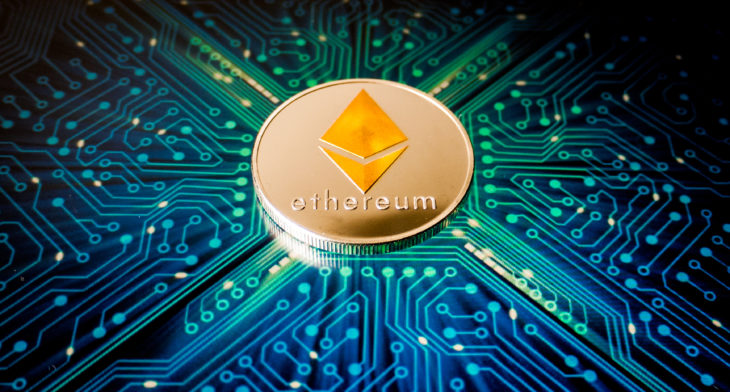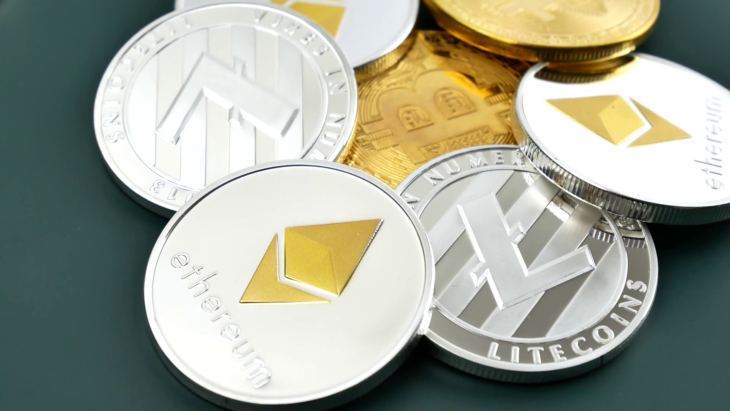Ethereum is one of the top two cryptocurrencies in terms of market capitalization (right after Bitcoin). It runs on its own blockchain network and enables developers to create their own decentralized applications (dApps) on it. Buttons aside, what makes Ethereum so different?
At its core, Ethereum is a distributed public blockchain network like Bitcoin but with advanced features such as smart contracts. Unlike Bitcoin’s single-purpose nature which allows users to transfer value from one person to another, Ethereum provides a full-fledged platform that supports various use cases through dApps created using its own programming language called ‘Solidity’. This has opened up multiple opportunities for developers from different fields such as finance, healthcare, government, and even entertainment. Its native currency Ether (ETH) powers transactions within the network and incentivizes miners for securing it through a proof-of-work consensus mechanism.

Source: coindesk.com
Contents
Where to Buy and Sell Ether (ETH)
Marketplaces offer a way to buy/sell Ether (ETH). These websites act as facilitators between buyers and sellers – you list your desired price for either buying or selling ETH without needing to know who you’re dealing with directly.
Brokers provide access to buying/selling ETH through their platforms. They have their own web-based interfaces where you can trade ETH with fiat currencies like USD or EUR but they often have user-friendly features like friendly graphical user interfaces that are easy to use even for first-time users
There are peer-to-peer networks that allow anyone to buy/sell ETH without needing an intermediary or middleman between them. This type of exchange is often decentralized in nature so it offers more privacy than centralized exchanges but can also come with hybrid forms.
Exchanges are arguably the most popular venues for trading Ether (ETH). They offer a wide range of services and features such as buying/selling ETH with other cryptocurrencies or fiat currencies like USD or EUR, margin trading, derivative products like futures and options contracts, sophisticated technical analysis tools, etc. Popular exchanges that support trading in Ethereum include https://ethereumcode.app/

Source: economictimes.indiatimes.com
History of Ethereum
Ethereum was first proposed by Vitalik Buterin in 2013 when he realized blockchain technology had more potential than just being a digital currency. He wanted to create a platform that could be used for developing dApps without relying upon any centralized system or authority.
In order to make this happen, Vitalik needed a team with extensive knowledge in cryptography and blockchain technology – giving birth to the Ethereum project in 2014 with support from some notable names such as Anthony Di Iorio, Gavin Wood, and Joseph Lubin.
Its main net went live in 2015 after a successful crowdsale campaign – making it one of the earliest ICOs ever launched. Since then there have been various updates released by its development teams such as Byzantium and Constantinople hard forks which have improved upon existing features while also introducing new ones such as smart contract operations over multiple accounts (Multi Account Contract Operations – MACE).

Source: phemex.com
Technical Overview
At its core, Ethereum works much like other blockchains but with added features that make it stand out from them. It uses a proof-of-work consensus mechanism very similar to Bitcoin but employs ‘Gas’ instead of electricity for fueling transaction execution over the network. Gas ensures the smooth functioning of transactions by charging fees based on the computational intensity involved in executing them.
The Ethereum Virtual Machine (EVM) is a secure runtime environment used to execute smart contracts, which are pieces of code written using Solidity language. These contracts allow users to interact with each other directly over the network without any third-party interference by sharing data securely and taking action signals according to predefined rules encoded within them. These contracts are stored on blocks within the chain which cannot be modified once deployed into a production environment.
In order for miners to join and validate transactions occurring within the network, they must follow certain rules called consensus algorithms. In Ethereum’s case, this algorithm is known as ‘proof of work’ (PoW), which follows a mathematical formula that proves a user has expended an adequate amount of energy in order to validate the transaction before it can be added to the blockchain ledger and confirmed accordingly. This incentivizes miners by providing rewards for properly validating transactions made within the network.

Source: smartereum.com
Advantages & Use Cases For Ethereum
The big drawcard for Ethereum compared to other blockchains lies within its platform capabilities offering developers near limitless feature set options when building applications on top of it. With these extra features available, it allows companies or individuals looking at creating decentralized solutions an easier entry point thanks largely due to lower development costs associated with building them.
Ethereum’s smart contracts offer a range of advantages over traditional database-driven solutions such as improved security, trustless operations, and automation of complex processes in a cost-effective manner. This makes it suitable for numerous use cases where data privacy is a priority such as healthcare and identity management but also for projects requiring higher levels of trust and transparency such as government services and financial applications.
Furthermore, Ethereum offers opportunities for tokenization services through its ERC20 standard token infrastructure, allowing users to easily launch their own digital assets known as tokens on the network. These tokens can be used for crowdfunding campaigns, loyalty points systems or simply as tradable assets with real value based on their underlying functionality. Finally, developers are currently researching ways to leverage Ethereum’s blockchain technology in order to create more efficient distributed energy systems or autonomous vehicles powered by “smart contracts” which will further bring innovation and convenience into many aspects of our everyday lives!

Source: videoblocks.com
Conclusion
Ethereum offers capabilities much beyond those offered by any other blockchain platform currently available on the market today which has made it immensely popular amongst both users & developers alike. Its ability to be used as both a payment system & platform has attracted widespread attention from businesses looking at utilizing blockchain technologies while eliminating many traditional risks associated with deploying them at scale.
The future looks exciting as we should see further improvements implemented into their protocol stack enhancing not only security but opening up even more possibilities when creating dApps across various industries aiming at gaining maximum efficiency gains or cost savings while simultaneously increasing overall user convenience levels compared to traditional approaches previously utilized before entering into this new innovative space!
